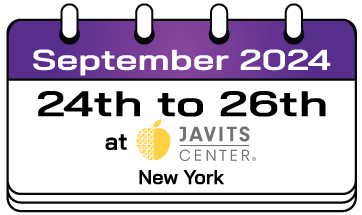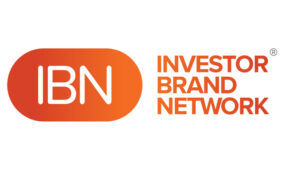I. PUBLIC OFFERINGS AND FLOATATIONS
“Floatation” is a generic term that includes a significant number of complex procedures, which result in the securities of a company being offering on the public capital markets. The main strength of Greenberg, Hornblower, Deschenaux & Partners is to undertake this process of floatation for individual companies, in whichever form is most favorable to the Issuing Company.
Each stage of the operation is extremely technical in nature, and requires extensive knowledge of the intricate regulations of the stock market authorities as well as access to advisers who have successfully completed the exams necessary to operate in this highly regulated arena.
It is due to these requirements that we advise our clients to be skeptical of the different ready-made solutions offered over the Internet or other media. Unfortunately, these solutions can result in legal and financial difficulties to the companies because of inadequate trading volume on the stock exchange due to the failure of the company’s market makers.
THE TRADITIONAL INITIAL PUBLIC OFFERING (IPO = INITIAL PUBLIC OFFERING)
It is useful to break down the process of undertaking a traditional IPO into its constituent parts as follows:
- Registration of the Issuer in order to obtain the status of “Reporting Issuer”.
- Registration of the Issuer with the relevant securities market authorities.
- Registration of the Issue with the relevant authorities.
- Registration of the securities with the administrative authorities.
- Conclusion of a contract between the Issuer and its Investment Banker acting as underwriter.
- Adhesion of the Issuer to a public market or stock exchange.
- Distribution of the securities on the securities exchange or market by the Investment Banker or by the issuer, according to the terms of the subscription document.
These stages are followed, according to the formal rules of the securities market on which the securities are quoted, and in particular the rules of the Securities and Exchange Commission and of the North American.
Securities Dealers Association.
ADVANTAGES
Reduced costs: The rules of the SEC & NASD do not fix a limit for the amount raised.
Creation of a “currency” for the company: When securities are quoted on the public market they have a certain and real market value. Consequently, when required, it is possible to sell more securities to increase liquidity in the security. Another useful purpose of this “currency” is when the company wants to undertake a takeover or merger with third companies, and use them as a substitute for cash.
DISADVANTAGES
High cost: The costs of a quote on a market are high, both for the initial offering and for subsequent operations. For an IPO it is usual that the commissions or other fees represent 10% of the capital raised. Furthermore, the legal costs of a quote (associated with the SEC) can amount to several hundred thousands of US dollars.
Slow Process: The process of an IPO requires many formalities to be undertaken with the relevant authorities, whether state or local stock market authorities. Particular attention should be paid to the SEC & the NASD. The time to undertake this process can take 9 months to one year.
LIMITED INITIAL PUBLIC OFFERING
(SB-I, SB-II, REG A, EXEMPTIONS)
Under certain conditions, notably where the amount of the initial offering is limited, the securities markets authorities allow an Issuer to undertake a quick offering whilst providing less information to the public and investors. It is necessary to be prudent in following this route in raising capital, since these limited offers subject the Issuer to future restrictions in raising additional capital.
ACCELERATED INITIAL PUBLIC OFFERING (FASTIPO™)
This type of public offering is limited to USD 20 million and is property and product of Greenberg, Hornblower, Deschenaux & Partners. The knowledge available at Greenberg, Hornblower, Deschenaux & Partners has led us to develop our own method of flotation. FastIPO™, as its name implies, consists of an accelerated flotation which can be completed in less than four months. This flotation operates under different rules and procedures than the traditional public offering, essentially using SEC Form-10 and the SB-II. The FastIPO™ is limited in use because of a number of restrictive requirements such as where the Issuer has an overly complicated legal structure, when it has existed for a long period of time, or when the number of issues necessary to inform the investor is too large.
The FastIPO™ is an excellent financing method because it is less restrictive than the requirements necessary for a traditional public offering, so long as the rules of the SEC are complied with.
ADVANTAGES
Cost Reduction:The FastIPO™ permits the Issuer to reduce the costs of the IPO in a significant manner. A smaller number of advisors are required and the speed with which these advisors can complete their necessary work reduces the cost.
Speed of Execution:We can organize an IPO much quicker than the usual time, and undertake all of the necessary preparatory work ourselves. Our excellent contacts with the relevant authorities enable us to expedite many of the laborious tasks associated with the normal IPO, and our experience in drafting the necessary documents reduces the amount of time required to conclude an IPO to between 2.5 and 4 months.
Creation of a “currency”: The advantages of a FastIPO™, in regards to this point, are exactly the same as those of the traditional IPO since there is no difference between the status of the shares in the initial public offering, future capital raising operations, or for the continued existence of the company as a quoted entity. Your company will also benefit since its shares are easily transferable and negotiable in order to achieve particular corporate goals. You will be able to benefit from this advantage in a number of situations, for example, when negotiating corporate guarantees or when undertaking acquisitions.
DISADVANTAGES
Possible only in the United States of America.
Limited to Raising USD 20 million: In certain cases, the time limit of four months can only be complied with when the initial capital raising is reduced to USD 20 million. However, the company can still undertake additional capital raises at a later date.
METHODS OF ASSIGNING THE SUBSCRIPTION
The method of assigning the subscription dictates which party is going to underwrite the distribution, that is to say, which party will be in charge of the distributing the offer.
NEGOTIATED UNDERWRITING
In a negotiated underwriting, the Issuer negotiates with the Underwriter that will underwrite a securities issue and distribute the shares. In this context, it is normal that the Underwriter will advise the Issuer as to the terms of the securities issue and on the drafting of the prospectus.
COMPETITIVE BIDDING
In the competitive bidding environment, the Issuer circulates a preliminary prospectus and invites Underwriters to make an offer before a particular date. The most attractive offer to the Issuer will be named the Underwriter.
Every securities issue is a process which is relatively complex and very technical. Greenberg, Hornblower, Deschenaux & Partners is able to guide the Issuing Company in order to protect its market position, as well as to draft the necessary documents and contracts required for the securities issue. This is set out below.
UNDERWRITING AGREEMENT
The Underwriting Agreement is the legal contract by which the Issuer engages the Underwriter or Syndicate of underwriters for the securities offering. This contract also fixes all of the conditions relating to the undertakings of the Underwriter.
METHODS OF SUBSCRIPTION
The method of subscription fixes the type of engagement which the Underwriter or Syndicate will make to the issuer.
“BEST EFFORT” SUBSCRIPTION
In the best effort subscription, the Underwriter diligently tries to sell all of the shares of the issue, and all unsold securities are returned to the Issuer. In this case the Issuer, not the Underwriter, assumes the risk for the failure to sell the securities.
FIRM COMMITMENT
Under conditions of a firm commitment, the Underwriter or the Syndicate agrees to buy from the Issuer all of the securities at a discount. A variation of the firm commitment method is the “stand-by” agreement, in which the Underwriter agrees to buy from the Issuer all of the unsold securities at the end of the subscription period. In this case the Underwriter or the Syndicate assumes the risk for the failure to sell all of the securities.
AGREEMENT AMONGST UNDERWRITERS
The Underwriters’ agreement is the legal contract by which the underwriters composing the Syndicate organize themselves, and how they operate with regard to the Issuer. This agreement fixes the subscription method which we discussed before
REGISTERING RESTRICTED SHARES RULE 144 (RESTRICTED SECURITIES)
Certain securities acquired following a private placement or securities held by people close to the company (directors, officers, and shareholders having 10% or more, and “significant shareholders” having 5% or more) are “restricted” under rules set out by the Securities and Exchange Commission. In the United States, these are called 144 securities after the number of the rule preventing their resale on the securities markets. Contrary to what many people think, these securities can be sold, but only provided that certain restrictions are adhered to, the principal one being that they are not sold on the market.
Greenberg, Hornblower, Deschenaux & Partners is expert in the sale of 144 securities. In most cases the restriction on these securities lasts one year. If the security is sold during this period in a private contract willingly entered into, then the sale is legal and valid, but the restricted resale period of one year commences for the new holder of the security on the date of purchase. There is therefore a risk that the market for the stock is illiquid, which can undermine the market in the share. This is the reason why these securities can be bought for a discount of up to 20% on the market price for “blue chips”. If the price of the stock is stable the risk of a sudden price decrease is less likely. Because of this, in cases of “small caps” it is possible to find discounts of more than 75%, since the price of these stocks are unstable, and the risks of sudden price declines much higher.
II. MARKET REGULATION
Far from contenting itself with helping a company on to the securities market, and then abandoning it to its fate, Greenberg, Hornblower, Deschenaux & Partners believes that it is very important to offer a company continued help relating to the regulation of the market for its shares, following its successful flotation.
COMPLIANCE ISSUES
The position of a public securities Issuer is one of extreme responsibility, and it is imperative that the Issuer adheres to all of the laws, regulations, conventions and administrative requirements of this role. On a daily basis Greenberg, Hornblower, Deschenaux & Partners is able to advise the Issuer through the services of its compliance department. Although this service can be expensive, it can help the company in its relations with the relevant authorities, which can in turn prevent putting the whole company into a difficult position.
CONTROL OF LIQUIDITY AND MARKET STABILITY
When the market for a share is erratic and therefore unstable, it is imperative that the Issuer analyses the reasons and takes the necessary preventative measures to avoid it. This is very important for the company to retain and preserve its image in the market, without which the market for its securities will cease to be attractive. Greenberg, Hornblower, Deschenaux & Partners is capable of organizing such services, for example, through the Investment Bank, which will ensure promotion of the securities and appropriate market making techniques.
MARKET MAKING
In order for the price of a share to remain stable or increase, it is necessary that the liquidity and volume for the share on the market are sufficiently strong. The market-maker guarantees the necessary liquidity of a stock and undertakes to create a buy and sell price for a normal market size of 100 shares. For every transaction the Market Maker can adjust the price in one way or another depending on the supply and demand for the shares. Greenberg, Hornblower, Deschenaux & Partners recruits Market Makers for the Issuer’s account and is able to arrange and implement the correct market making strategy for a share.
INCREASE OF VOLUME AND CREATE A WIDER SHAREHOLDER BASE
There are two fundamental goals underlying market-making activities. One is to force an increase in the price of the security, either for speculative purposes, or to create the conditions conducive to merger activity. The other goal is to extend the shareholder base of the company in order to diminish the volatility of a security and therefore create a steady price for this security.











